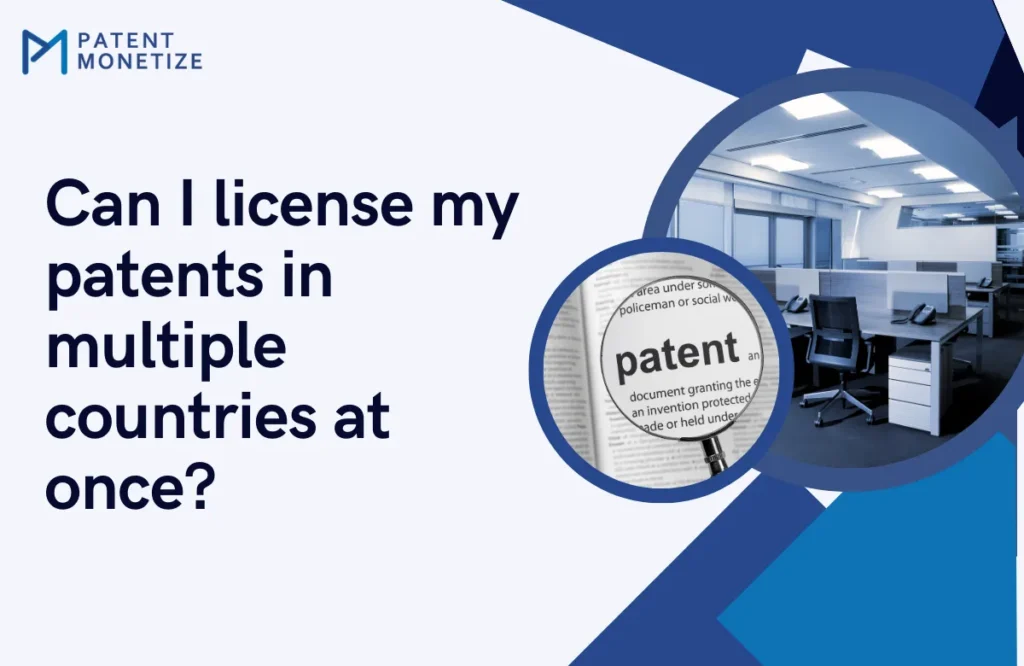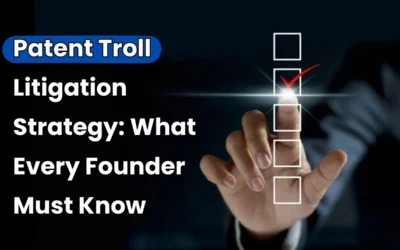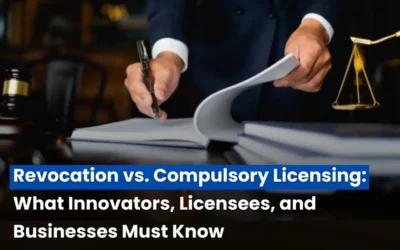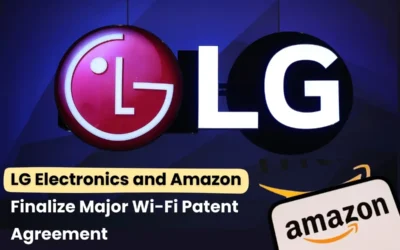
Perhaps the most strategic approach to earning a profit off of your IP while retaining control of your inventions is through licensing patents. Patent licensing will allow others to utilize, manufacture, or sell patented technology in return for royalties or some other compensation. As you approach patent licensing internationally, the very first question to inventors and patent holders would be: Can I license patents in several countries at the same time?
Yes, patent licensing in multiple countries is possible. However, patent licensing across a border and into multiple jurisdictions requires careful planning and legal consideration so as to ensure that your interests are protected and revenue maximized. In this article, we shall take it to how to license your patents around the world, possible strategies that may be applied, and how best to ensure a successful, profitable licensing deal involving several countries.
Meaning of Patent Licensing
Let us first define what patent licensing entails before discussing the patent licensing of other countries’ nitty-gritties.
Patent licensing refers to the process whereby other parties’ rights are given on the use, manufacture, or even sale of an invented patent right in exchange for some amount. That amount of money can take a form in royalties, big-time lumps, or however the parties see it. Patent licensing comes into two forms-licensing agreement types.
- License of Exclusivity: It grants an area or a field of use right to a licensee to make or sell a patented technology; the licensee does so in such a specified region or field. Of course, that reduces one licensee’s chances to license it for the same patent in that particular region.
- Non-exclusive licensing: a nonexclusive license grants more than one party rights in the same geographic region or for the same field of use. This is the most common aspect of patent licensing across countries, helping a patent owner cover his technology into as many markets as possible across different regions of the world.
Having understood what patent licensing is, the next would be patent licensing over more than one country.
Read Also: The Complete Guide to Patent Acquisition Process in India 2025
Steps of Patent licensing in Multiple Countries
Step 1: Scope of patent protection
First of all, in licensing your patents in several countries, you want to make sure that you have patent protection in each of the countries in which you wish to license your technology. Patent protection is territorial. That is, a patent granted in one country does not automatically apply in another.
- National Patents most countries‘ laws require filing patents under those laws with a different national patent application, which can be costly and sometimes time-consuming. However, a national patent protects the underlying intellectual property only for that country.
- International Patent Protection: Most systems allow patents to obtain the protection of inventions in more than one country on a single set of applications-a huge bonanza in licensing the patents across the world:
- Patent Cooperation Treaty (PCT): PCT filing is an international treaty that enables a single patent application filed, which could claim protection in as many as 150 contracting countries. The treaty offers a possibility of attaining protection more than one country at one go instead of applying separately for different jurisdictions in the same country.
- EPC (European Patent Convention): If you belong to Europe, you can have one single application covering many European countries in the EPC. Once such a patent has been granted to you, then you can assert your rights anywhere in the contracting member states.
- Regional Patents: Right of protection is granted for many countries in most regional offices, such as ARIPO (African Regional Intellectual Property Organization) and EAPO (Eurasian Patent Organization). The regional patent system has made the whole process of filing a single patent application to obtain rights in a number of countries within that region very smooth.
Step 2: Understand Patent Licensing Laws
After a patent is filed, it is time to look for jurisdictions in which you want to license the same. International patent licensing is a field that is strongly interwoven with the nature of the market of that particular country, specific laws followed, and the type of business practiced in that place.
Once you narrow down to jurisdictional options to license then the following take much significance.
- Demand: Whether your technology is wanted in a country depends upon the demand of your technology in the market and its commercial potential. The country with a high manufacturing industry or an industry that is similar or related to your patented technology shall be targeted for licensing.
- Legal and Regulatory Framework: Patent enforcement laws vary from country to country, and so one needs to understand local laws before licensing across other jurisdictions. Some countries have strong IP protections coupled with enforcement mechanisms than others; this would actually hamper your possibilities of collecting royalties and preventing infringement.
- Lengths and Expiry Time: The period granted to the patents can differ among countries. Consequently, license agreements may become concerned with when a patent would run out of an expiry term within each of its countries; consequently, length and patent time also may become aspects of interest and are to be included within license agreements.
- Language and Cultural Differences: You would consider this as a point in your plan, if your desires are towards nations whose languages and cultures differ from your mother tongue. This will bring hiring of local agents or lawyers and sometime licensing experts to the table for smooth talking and then bringing deals and agreements onto firm ground.
Read Also: The Complete Guide to Patent Acquisition Process in India 2025
Step 3: Draft Multiple Countries Licensing Agreement
After you have ascertained which countries to license your patents to, the work becomes devising a licensing agreement that could be applicable for a number of countries. Among the clauses that you should put in your licensing agreement are:
- Territory: Identify the territory where the licensee shall be licensed to exploit your patent. Specify if it is for use in one country, multiple countries, or only in a particular region.
- Royalty rates and terms of payment: They will pay you what amount in royalties, and you will get paid that amount at what time. You may negotiate a different royalty rate for every country, depending on the possible sales or market.
- Field of Use: Clearly describe the industry or use area under which the patent license is given. If the patented formula of a new medicine is licensed to you, it may only be allowed to use it for certain diseases or areas of a certain market.
- Exclusivity: Decide whether you are granting the license exclusive or non-exclusive. An exclusive license will convey exclusive rights to the licensor in a particular territory, while a non-exclusive license will give you permission to license other persons in the same jurisdiction.
- Performance Milestones: Decide whether you would incorporate performance objectives or goals for the licensee. The latter may include minimum sales, development timelines or specific accomplishments that are directly related to commercializing a product.
- Term and Termination: Agreement for how long the agreement may subsist for Terms of Termination: Situations under which the agreement shall end you want to negotiate a termination option at your option under which he cannot meet any specific requirements indicated by the licenser.
- Dispute Resolution: It could be an important clause relating to multiple licensing in different countries, each having a different legal system. Arbitration is preferred most of the times as it takes relatively less time and is cheaper compared to litigation.
Step 4: Local Patent Experts and Legal Counsel
Licensing is cumbersome across most countries by having to delve into their systems of law that are quite a maze. Effective patent licensing can only be a reality in this local system for it to consist of the presence of legal services conversant on international IP laws.
- Patent Counselors: A registered patent counselor who is aware of the international IP law may help you draft a licensing agreement that complies with all the applicable laws of each jurisdiction for which you intend to license your patent and, at the same time, may help you file for patent protection in foreign countries.
- Licensing Consultants Locals In addition to lawyers, you should appoint local licensing consultants familiar with countries to which you want to license your patents. They will seek for you licensees and work on agreements while also being very much familiar with the subtleties of a local market.
- Patent Brokers: patent brokers are one of those intermediaries who help the owner sell or license patents to the appropriate buyer or licensee. They have a connection with potential buyers and licensees through which they may accelerate licensing.
Step 5: Monitoring and Enforcing the Licensing Agreement
After you’ve executed licensing agreements in multiple countries, it’s essential to monitor and enforce the terms of the contract. Regular monitoring can help ensure that the licensee is complying with the agreement and that you’re receiving the appropriate payments.
- Audit Rights: Ensure that your licensing agreement includes provisions for periodic audits of the licensee’s books and records. This helps verify that royalty payments are being made correctly.
- Execution: In the event that a licensee defaults or infringes upon his patent rights, then appropriate action must be taken. That is done via formal demand letters, arbitration or filing of suit depending on which agreement stipulates.
- Market Surveillance: In addition to auditing, the licensee is supposed to monitor the market for infringement by third parties against your patents. It is either done through local associates or private investigators to know whether that is so or not.
You can have a reasonable income and totally own the intellectual property created by licensing patents to different countries. However, it does take a lot of planning and strategic thinking to get through the licensing process with the least hassle or loss. Provided your patents are well protected in every country, and your licensing terms are solidly negotiated, worked out with qualified legal experts and conscientiously enforced, then yes, your patents can indeed be licensed and maximized with ease across any number of different jurisdictions.International patent licensing will require awareness of both the legal and business environment of each country targeted. Using this guide will let you protect your interests while exploiting the successful strategy of a global licensing strategy.
Conclusion
By using the strategies outlined above, you can confidently license your patents in several countries and ensure full financial return on your intellectual property. It’s important to consider enforcement and adapt terms based on local laws and market conditions to maximize the value of your patents.









